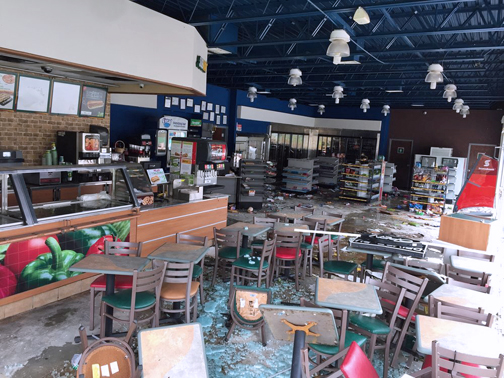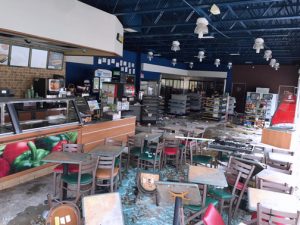Study: Hurricane María unmasks PR’s poverty, whose face is female

When Hurricane María hit Puerto Rico on Sept. 20, it left a trail of major economic damage and wiped out most of the vegetation. The storm also uncovered the poverty that exists in the island, which makes it the poorest United States jurisdiction.
A study published recently by local economic firm H. Calero Consulting, revealed that the face of Puerto Rico’s poverty is young, female and black.
According to the Census Bureu, about 400,000 children in Puerto Rico, or 58 percent of all children — lived below the federal poverty threshold in 2016, a measure that has been shown to underestimate the needs of families, the study showed.
“Research shows that, on average, families need an income of about twice that level to cover basic expenses. Among the age brackets, children 5 year-old or younger have a poverty rate of 66 percent, while the group of 5 to 17 years-old has a 56 percent poverty rate in Puerto Rico,” the report showed. “Most of these children have parents who work, but low wages and unstable employment leave their families struggling to make ends meet.”
Puerto Rico has been struggling with poverty since 1970, but has made strides in overcoming the problem, relying on economic growth — the average annual GNP growth was robust in the 70s, 80s, and 90s with 3.3 percent, 2.1 percent, and 2.8 percent respectively. Federal assistance initiatives, such as the Women, Infant and Children (WIC) and the Food and Nutrition program also helped reduce poverty.
For the most part, poverty is prevalent along the island’s mountain region. The island’s poverty rate, which is the percent of people living below the federal poverty level of $19,318 for a family of three in 2016, decreased to 44.3 percent in 2016, a reduction of 21 percent in 46 years, the report noted.
But, after the Sept. 11 attack on the United States, “the reduction on Puerto Rico’s poverty levels lost momentum,” H. Calero Consulting stated in its most recent edition of Economic Pulse.
“After almost seven decades, Puerto Rico lost the past decade with the current economic recession. The island is headed for severe hardships that could worsen poverty and indict the economic growth that was ‘achieved’ since the 1950’s,” the report confirmed.
“This raises many troubling issues going forward, such as, our capabilities to sustain education, health, and well-being. The island has undergone several dramatic economic changes, from an agrarian rural economy to a manufacturing and more urban economy,” the report further noted.
“Now, we need to revisit our economic vision and plan to undertake yet another transformation, more reliant on a competitive niche agriculture, tourism, and high-tech services,” it added.
For now, Puerto Rico is in the 25 percentile of territories with the lowest poverty in the world. However, when bumped against the U.S. mainland, the island has more than twice the poverty level of Mississippi, the poorest State in U.S. mainland. So, if the island were to become the 51th State, it still would be the poorest state in the union.
“Puerto Rico does not enjoy the same benefits as other states in the U.S. mainland because of its current status as a U.S. territory,” the Economic Pulse report stated. “Puerto Ricans rank 14th when it comes to supplemental nutrition, receiving on average $128.85 monthly per participant. [That is] slightly above the U.S. average of $127.57, but lower than in Florida and New York.”
Regarding unemployment benefits, Puerto Ricans receive an average $133 weekly. This places Puerto Rico last in weekly unemployment benefits compared to the 50 states. Temporary Assistance for Needy Families (TANF) is another benefit in which Puerto Rico ranks last, with $165 monthly, compared to U.S. mainland states.
Implications of poverty
“Poverty hinders children’s ability to learn and contributes to social, emotional, and behavioral problems. It also supports poor health and mental health. Risks are greatest for children who experience poverty when they are young and/or experience deep and persistent poverty,” the report confirmed.
“Poverty has a way of rotting society to its core by negatively affecting a child’s development and education. Poverty can also increase crime incidence, specially among youth,” it noted.
As a result of Hurricane María’s strike on Puerto Rico, it is forecast that by the end of 2018, the island’s poverty levels could reach between 52.4 percent and 60 percent, H. Calero Consulting stated.
“And these scenarios have not even begun to factor in the potentially adverse effects of the proposed U.S. tax reform, currently being discussed,” the firm concluded.













